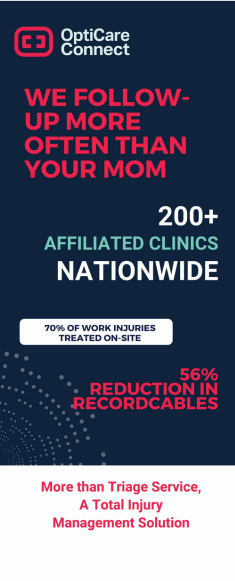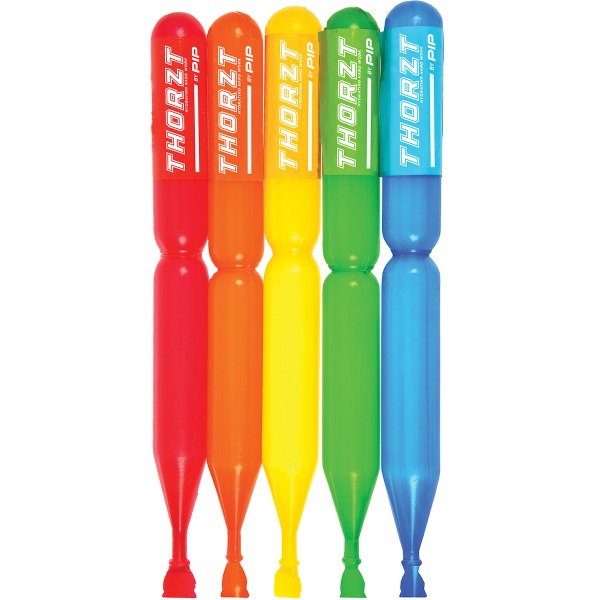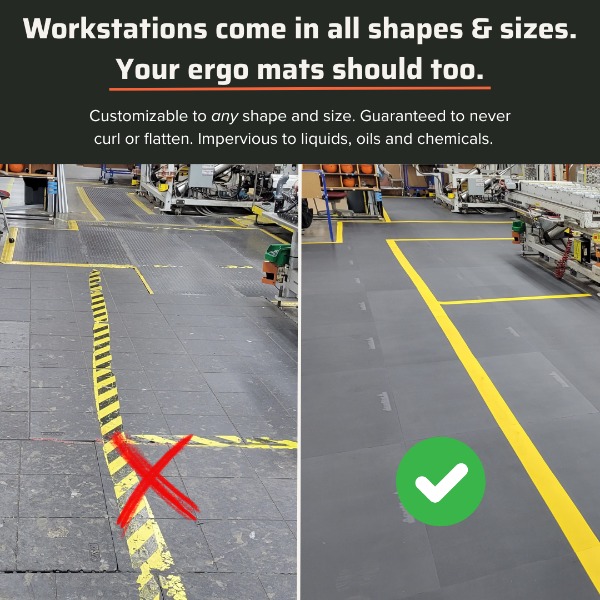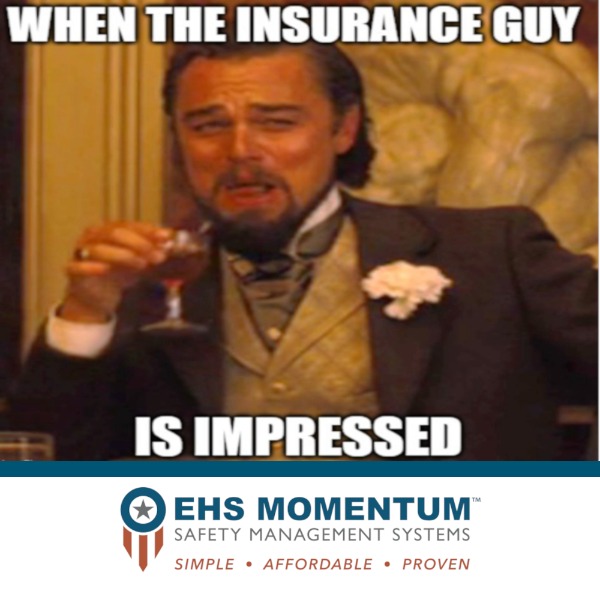The community for Health and Safety Professionals. Check out today's discussions.

 Welcome to Safety Knights!
Welcome to Safety Knights! The community for Health and Safety Professionals. Check out today's discussions.

The People's Safety Summit
Forget stale coffee and conference centers. Join the revolution from wherever you are. 🎉 Welcome to the People’s Safety Summit 📅 When: August 6, 2025 📍 Where: Anywhere you want—virtually, of course! Register: https://forms.gle/We6MBiUryEhnZfgRA We get it—not everyone can hop on a plane or ditch their desks to attend a safety conference. That’s why we’ve flipped the script and brought the summit directly to you. What’s going down: 🔥 Interactive product demos to supercharge your safety toolkit. 🎤 Open mic networking sessions—because safety pros deserve to connect without the awkward handshakes. 🗣️ Dedicated topic rooms—jump into the conversations that matter most to you. 🚀 A cutting-edge virtual experience that’s as close to real-life as digital gets—no boring webinars, we promise. Who’s invited: Everyone who believes safety isn’t just compliance—it’s community. Ditch the travel expenses, grab your favorite snack, and come see what safety looks like when the People run the show.


test post
flkjasklfas

Hiring Consultant
“What’s the biggest headache when it comes to hiring a safety consultant?”

Test p
lsjkdfskafsa


Test
iosdajfjsadf skdfjasjdfkasj fkl s
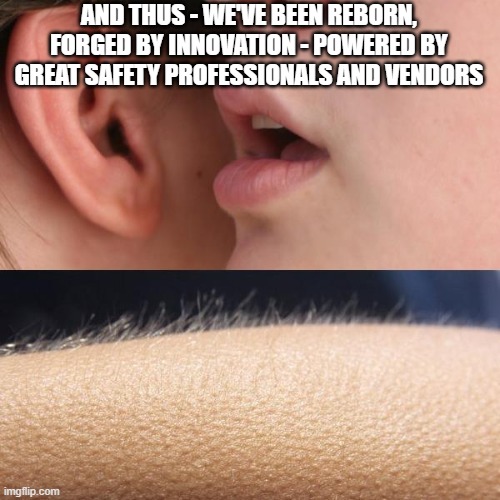
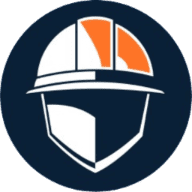
Test 2 Post
test post
My first post
Test post content
My First Post
Testing first post
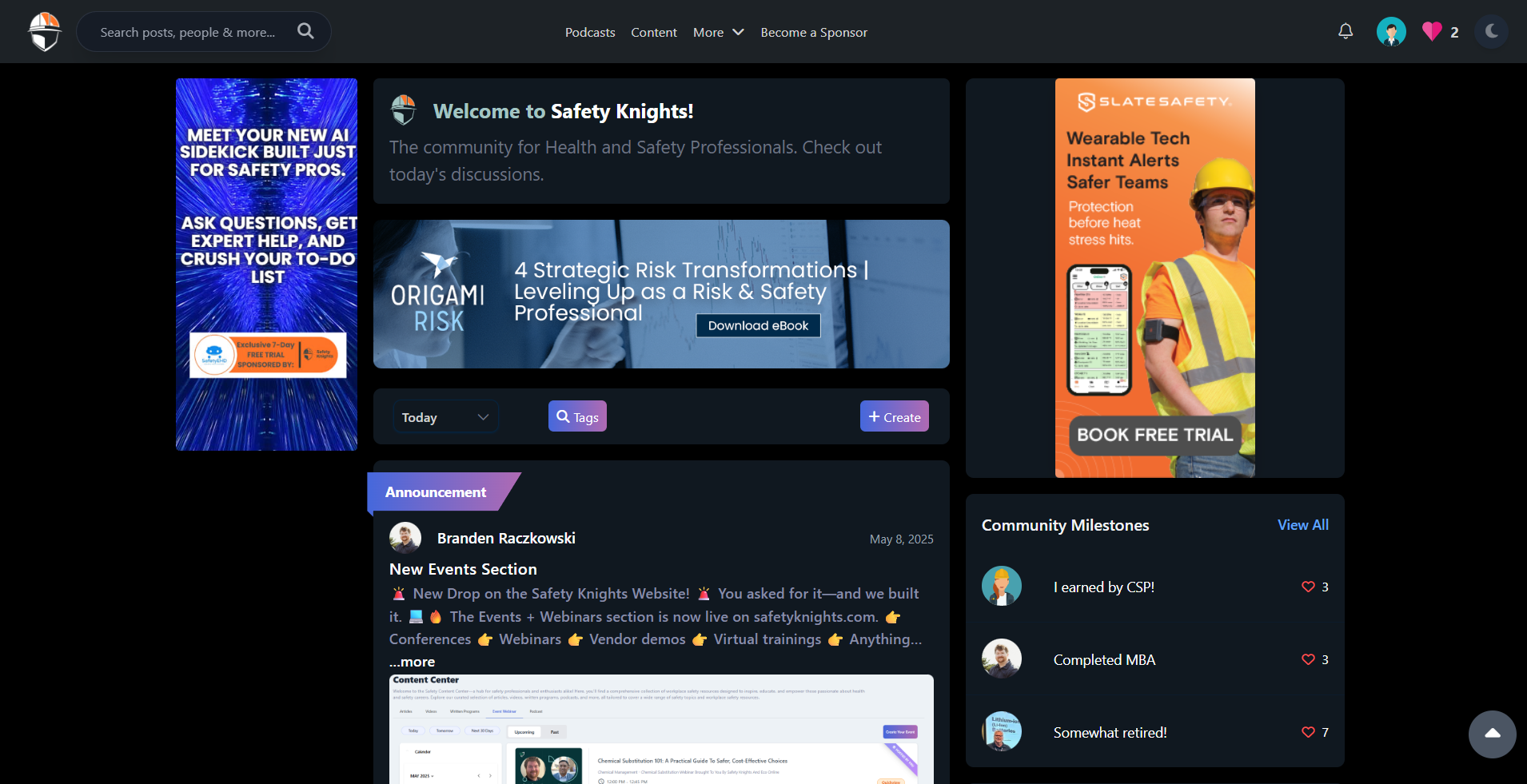

Test post
Test post 08/07
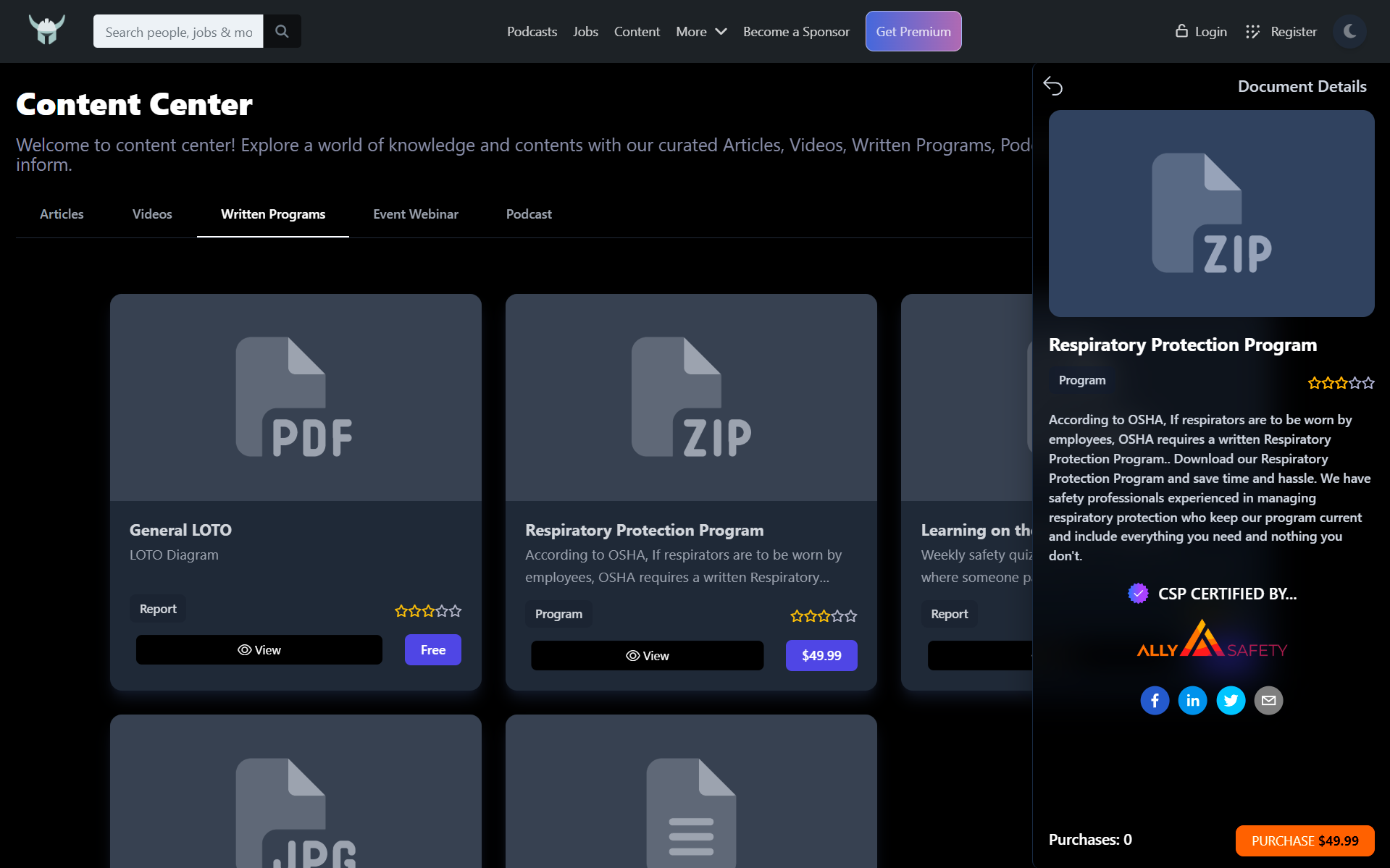
test anon 7/3 image
lkjsjksajklsjkdfjklsd
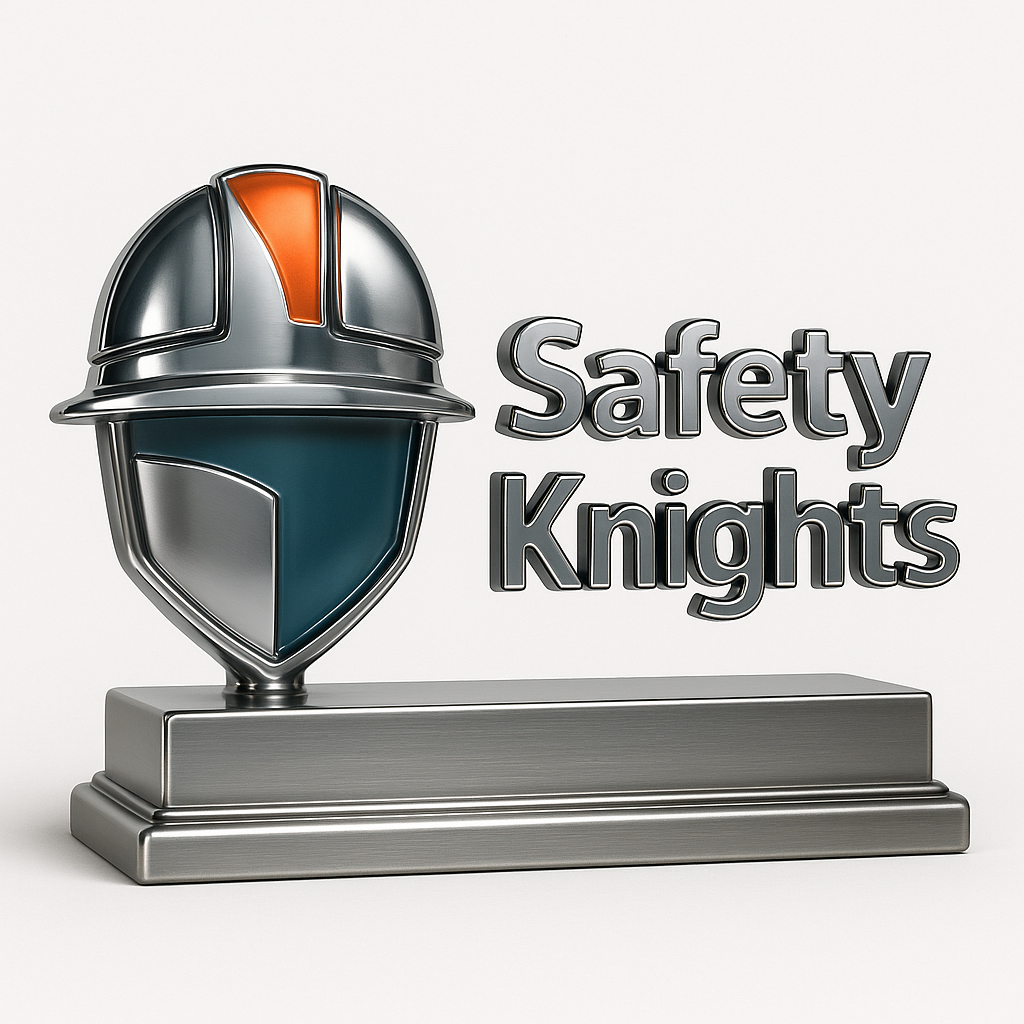
Test anon
sfasfasfasfsafs Test edit

Test Poll 7/3
sfasfasfsafasdfs Test edit
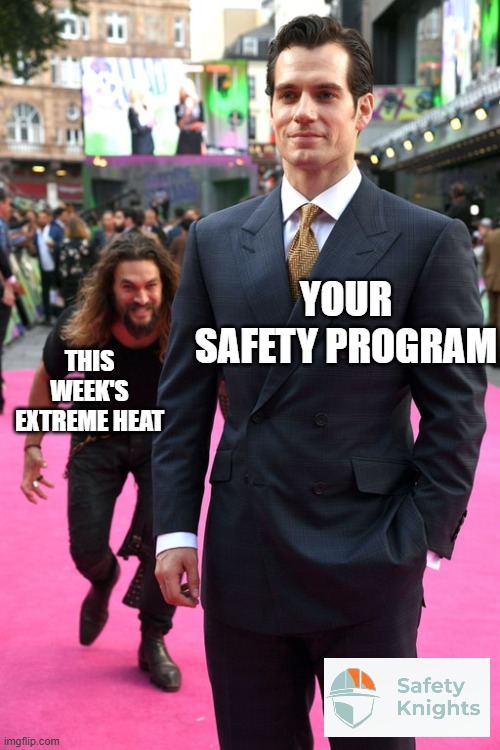

Test Post 7/3 no image
lskdf ksfjskjafksj aklf

Test Post 7/3
lsdf skaj dfasj fasj f
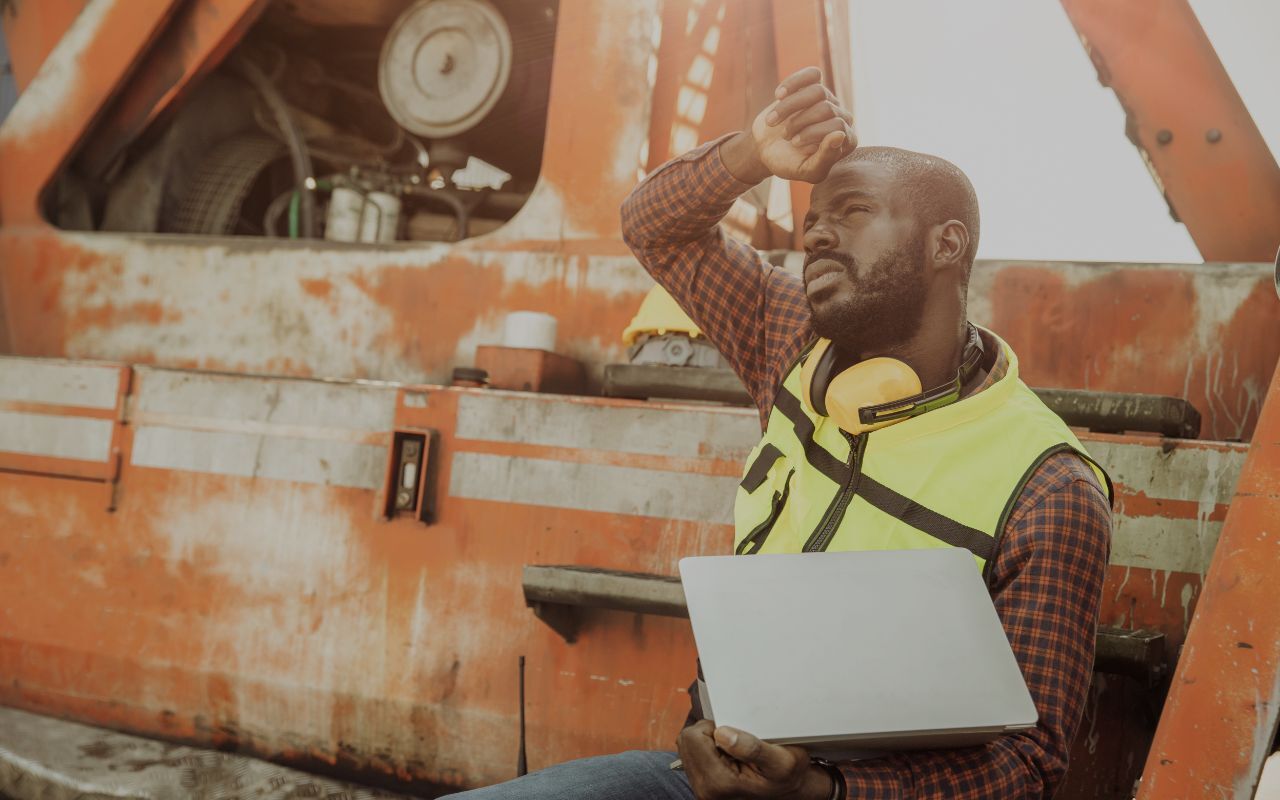
Test Post
Test Post Content

Test
A big shoutout to Safety Knights subscriber Mike James for inspiring this article with his post asking about laboratory safety for creating a manual. Mike’s thoughtful question sparked the idea to create a guide that dives deep into what safety professionals and EHS managers need to know when developing a comprehensive safety manual. If you're embarking on this critical task, this blog will equip you with the essentials to ensure your workplace is as safe as it can be. Safety manuals are the backbone of a safe work environment. They outline the procedures, protocols, and resources employees need to mitigate risks and tackle emergencies head-on. Whether you're working in manufacturing, a corporate office, or a laboratory with chemical handling, a well-constructed safety manual is the foundation of a proactive safety culture. Understanding Legal and Regulatory Requirements: One of the first elements of your safety manual should address compliance with applicable laws and regulations specific to your industry. Unsafe practices aren’t just risky; they can also result in hefty fines or worse, a workplace tragedy. Key aspects to include are: ● Federal Regulations: Ensure you reference OSHA (Occupational Safety and Health Administration) standards in the US or your country’s equivalent. Where applicable, include OSHA-recommended signage and emergency protocol standards relevant to identified hazards. ● State or Local Guidelines: Some states or regions have stricter regulations than federal laws. Make sure you’re including these to remain compliant. ● Industry-Specific Standards: For sectors like construction or laboratories, it’s vital to incorporate standards such as NFPA guidelines or chemical safety requirements. ● Documentation Requirements: Train employees on how to file reports when incidents occur and maintain records to meet legal standards. Clearly state these requirements and create an easy-to-navigate section in your manual to ensure nothing is overlooked. Identifying Hazards and Assessing Risks: A reliable safety manual begins with a robust identification of workplace hazards and an assessment of associated risks. Some steps to include are: ● Hazard Identification: ○ Physical hazards (e.g., machinery, slippery surfaces). ■ Chemical hazards (e.g., exposure to toxic or flammable substances). ■ Biological hazards (e.g., handling infectious materials). ■ Ergonomic risks (e.g., improper workstation setup). ● Risk Assessment Protocols: ○ Describe procedures to evaluate the likelihood and impact of each hazard. ■ Provide tools like risk matrices or checklists for employees to use during routine operations. ● Control Measures: ○ Clearly define administrative controls, engineering measures, and required PPE. Your goal is to identify risks before they become issues. A dynamic, regularly updated manual ensures your team is always prepared. Emergency Procedures and Contact Information: An emergency demands a clear head and rapid action. For this reason, emergency procedures must be simple, comprehensive, and prominently featured in your manual. Every potential scenario should be addressed, including: ● Evacuation Plans: ○ Detail evacuation routes and designate muster points. ■ Provide guidelines for assisting employees with disabilities. ● Specific Emergency Scenarios: ○ Include tailored plans for fires, chemical spills, medical emergencies, extreme weather, and other risks relevant to your workplace. ● Key Contact Information: ○ List emergency phone numbers such as fire departments, local police, poison control, and internal safety officers. ■ Highlight where first aid kits, AEDs, and spill response kits are located. ■ Ensure this information is accessible in both digital and physical formats and is clearly understood by non-native speakers or employees with disabilities. Consider including easy-to-read flowcharts for quick decision-making during high-stress situations. Training Programs and Competency Verification Even the best safety manual is useless if employees aren’t adequately trained. Include a section that describes your organization’s approach to training: ● Onboarding Programs: ○ Outline the safety training delivered to new hires to ensure they understand core processes from day one. ● Role-Specific Training: ○ Detail additional training required for roles with higher risk exposure, such as machine operators or lab technicians handling chemicals. ● Competency Verification: ○ Where legally required or operationally beneficial, include assessments, certifications, and practical tests to validate competency. ■ Recordkeeping protocols for certifications and training history. ● Refresher and Advanced Training: ○ Schedule regular updates on evolving safety protocols and industry advancements. Investing in well-rounded training serves as a long-term defense against accidents and inefficiencies. Laboratory Work and Chemical Safety: If your organization conducts laboratory work or deals with hazardous chemicals, dedicate an entire section to safety protocols for these operations: ● Chemical Labeling and Storage: ○ Include GHS-compliant labeling systems and proper storage techniques like segregation by chemical compatibility. ● Spill and Exposure Response: ○ Create clear steps for addressing s
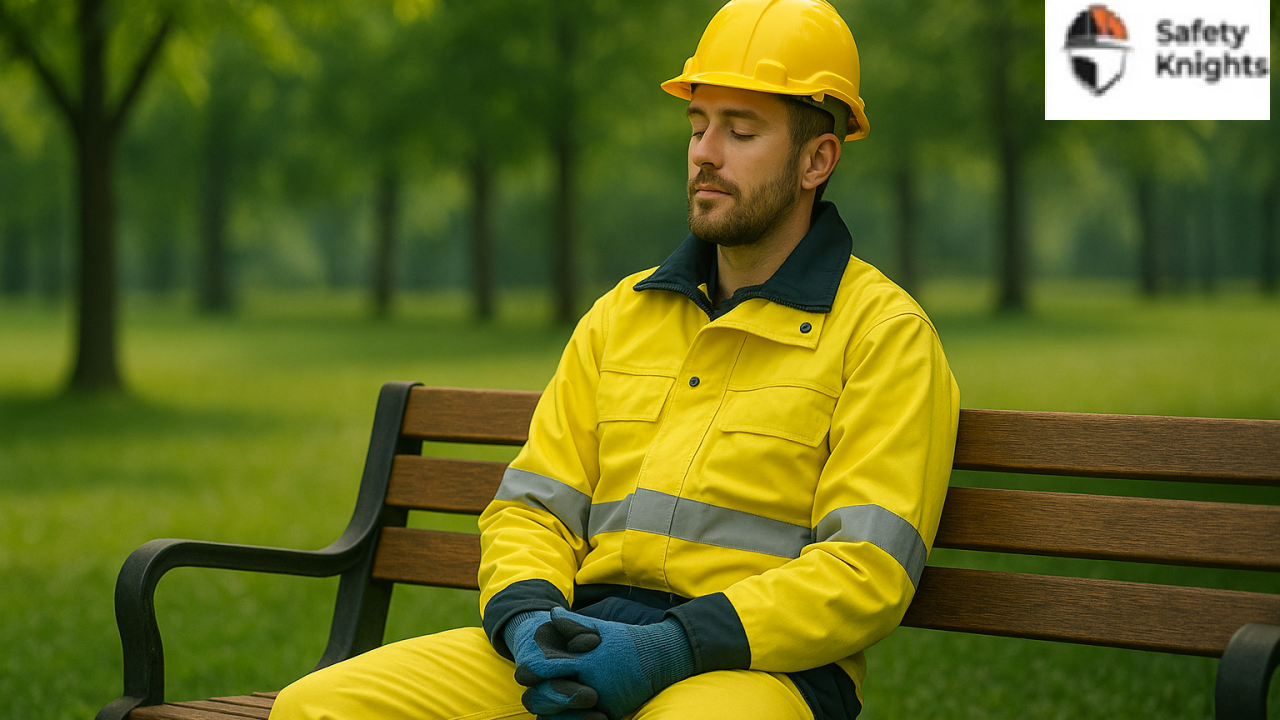

Test Post 6/27 no image
ksj fjsafkjsafjasjf s jf

Test Post 6/27
lksajdfasj fsaj fkjf-edited test
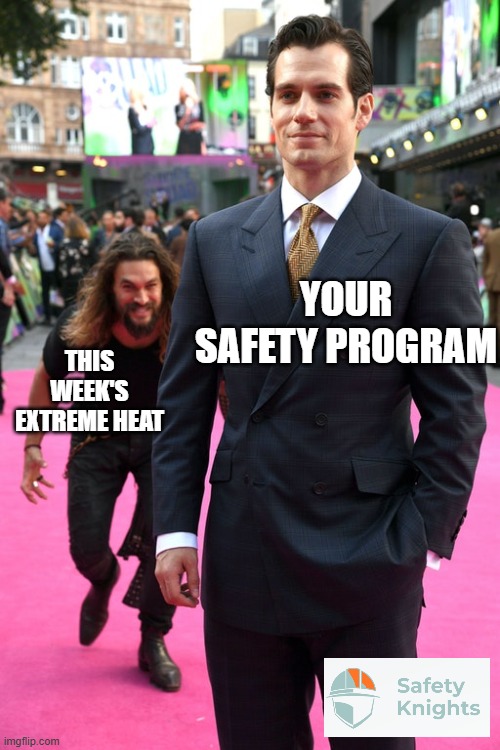
Test new
test 12345

Warehouse columns (Poles)
I'm needing a better solution for my warehouse columns in the staging area of my warehouse. I already have poles painted yellow and column protectors, but I keep having operators hit the poles. They state they poles are in their blind spot when turning. New and Season operators. They are driving Order Pickers. I have floor tape as well.
Roadway Worker Safety
Hey Safety Knights: Who here has employees working on or near the roadway? If so, you know how tough this exposure is to manage. From distracted drivers to limited space and unpredictable environments, roadway work remains one of the hardest safety challenges out there. If you're looking for new strategies or tools to support your crews, check out my latest article in Professional Safety Journal titled Improving Roadway Safety. https://www.assp.org/publications/professional-safety If you'd like help adopting R.O.A.D. Ready just hit me up and let's get started.

Incident recordability...To Be or not to Be, what would you do?
The other day, we had an employee who was bending down to look at an electrical box that was mounted on the ground. The employee had knelt down to survey the job. Then, when he went to stand up, he heard/felt a "POP" in his knee. He was not lifting anything; he was performing work in the box, and he just stood up. So, my question is... Is this work-related just because he was "on the clock?" It wasn't like he was trying to lift something from the floor to the desk by bending at the waist while seated, twisting to his left to pick up a 22# electrical meter box (that one happened a few weeks ago, which caused a torn rotator cuff, which requires surgery...more on that one later). HE WAS JUST STANDING UP. A motion we all do 100s of times each day. So, explain to me why it is a Workers' Compensation claim? If he did this same thing at home, he more than likely would say to himself, "Wow, that stinks," and go on about his day. Even if it progressed to tightness or pain in his knee, would he really go to the walk-in clinic or make an appointment with an orthopedic surgeon? Take into consideration this is an employee who is not very overweight and in his early to mid-20s. But since this happened while he was "at work," it becomes a WC claim and could lead to an OSHA recordable? Okay, next topic... What if someone injures a body part while at work that they had a previous surgery on? It, too, is an OSHA recordable, correct? These pre-existing conditions, or where an employee injures a previously injured part of the body, drive me nuts. If you have a torn rotator cuff and have it repaired, it will NEVER be 100% perfect or how God made you, and it is more susceptible to being re-injured. Next topic... What do you do for those employees who "know" they should do a task safely but "choose" to do it incorrectly? Case in point with the meter box. He knows he should get off his office chair, stand up, and properly bend his knees (and follow all the steps I teach in our body mechanics class), pick up the item, and then set it safely on the desk. Then he can return to his office chair to start wiring the meter box. Even while waiting to be seen by an orthopedic specialist, the employee says, "Man, I know I should have done better. But I have done it this way 100s of times and never had an issue." Last topic... How do you address those employees who do not take their health and wellness seriously, and since they do not take care of their bodies, they are more prone to have these MSD-related (soft tissue) injuries?


If a person's knee pops in the forest, will we hear it?
I hope I can post what happened today when I get back to work tomorrow. Let me just set the stage for tomorrow's FIREY POST... If a knee pops in the middle of a forest, is it really a work-related incident? Yeah, marinate on THAT ONE. Peace out brothers and sisters!!! #stupidity #safetyfails #recordability #personalhealthconditions #previouslyinjuredareas

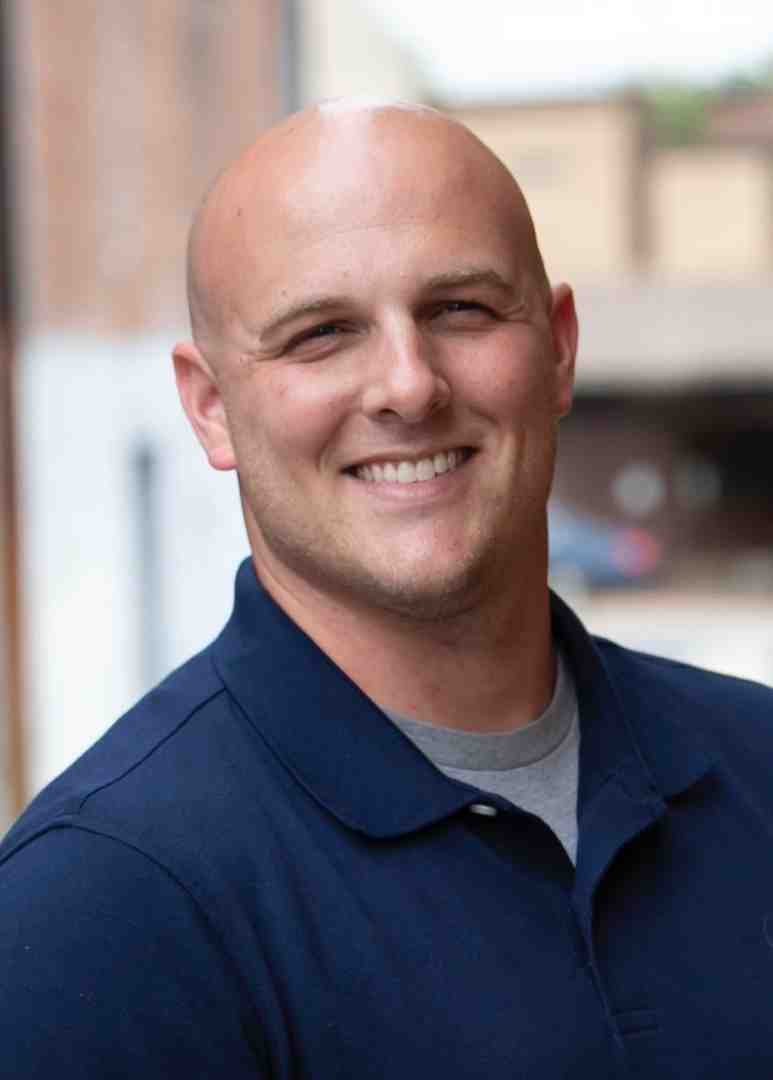
New Quiz - Forklift Operations
It's National Forklift Safety Day, so let's test your forklift knowledge! Head on over to the link below to take the quiz! https://safetyknights.com/quiz/68489d1e6f5428e1874136f7/minimum_age_to_operate_a_forklift_on_a_farm


Saying the Quiet Thing Outloud
Ok, I need to get this off of my chest on here... but the posts on Linked in need to stop! One of these days I am going to end up commenting and it's going to get me in trouble! Like the "out of PTO" post... it's so right but yet employers don't stand a chance in so many instances. Please keep up the great work! It's therapy for EHS professionals! Update... I posted a picture of the gif below... showing someone "faking" getting hit by a vehicle.

Safety Meeting vs Training
There’s a lot of discussion lately and even more research on how people actually retain safety information. Traditional training programs often rely on long sessions, slides, and structured formats. But is that really how we learn best? Personally, I’m a big believer that hands-on, kinesthetic training is one of the most powerful tools we have. When people do the work (touch it, move through it, rehearse it) it just hits different. So I’m curious—what’s your take? Do you lean more toward structured training, short-form safety talks, or something in between? What’s actually helped your people remember and apply safety principles on the job? Let’s hear it, Safety Knights.

Secondary Labels - Holding Up In Harsh Environments?
Thought I found an answer to get secondary labeling to stand up in harsh environments. We bought Avery "Ultra" Labels that are advertised to hold up in a 90-Day Salt Spray Booth test. They did not hold up 24-Hours in a printing company environment. We just used a standard laser printer. Anyone have any tips and or tricks to offer. We are going to try plastic shipping take over the labels. What do you do that works? Thanks! Fitz


WEBINAR: Is Your Workforce Prepared for a Medical Emergency?
We all know how the old saying goes - "Let's go home the same way we came in - with all of our fingers and toes!". While we certainly never want anyone to get hurt, we have to plan for the unthinkable - what if there's a major incident and one of your co-workers gets severely injured? Are your employees properly prepared to respond to a worker who is in cardiac arrest? Can they stop severe bleeding to prevent a person from dying before Fire/EMS arrive on scene? Would they know how to treat a worker who fell from 10+ feet off the ground with a potential spinal injury? During this free 1-hour webinar on June 30th at 10:00 AM CST, we will help you understand some of the essentials when it comes to planning for a medical emergency in the workplace. Topics covered will include, but not be limited to: • Various Types of Workplace Injuries/Illnesses • OSHA and ANSI Requirements • State-Specific Requirements • CPR Training vs. First Aid Training • First Aid Kit Contents • AED Considerations • General Treatment Guidelines • Industry Best Practices • AND MUCH MORE! Register at the link below: https://us06web.zoom.us/webinar/register/6517490726285/WN_ZStShkfTR6esh5BmtA6gYw


ASSP & NSC national safety conferences...Are you in or out?
I haven't posted on here for a while,e but I was curious about how many of our members are going to be attending: ▶️ ASSP Safety 2025 (July in Orlando) ▶️ NSC Safety 2025 (September in Denver) I will be attending both and am very thankful for the opportunity to speak at the ASSP Leadership Conference the day before the main show, and getting to speak at the main NSC conference. Let me know if you will be there or not...

NSC Safety Maturity Assessment
Hey everyone, it's been awhile since I've posted in here but I work at National Safety Council now! I'm happy to answer any questions on membership whether you're already a member or are interested. We have a Safety and Health Maturity Assessment in beta mode. It is a free tool that helps organizations identify where they’re at on their safety journey and offers next steps to help improve safety. NSC aims to continuously improve this tool with your help. If you could take 15 minutes to complete this assessment and then share your feedback via a short survey, that would be amazing! The survey is open to anyone regardless of NSC membership status. https://www.nsc.org/safety-and-health-maturity-assessment/maturity-assessment-feedback

Confined Space?
Looking for some help. Temperature chambers - confined spaces or not? Does anyone have a definitive means of identifying confined spaces so as to take the subjectivity out of classification? Thank you!

New Quiz
This week is CPR & AED Awareness Week, so I will be posting various quizzes this week to check your CPR and/or AED knowledge. Go over and check it out! https://safetyknights.com/quiz/683df7546f5428e18729c9c7/oxygen_given_during_cpr

Ladder Compliance
Is this ladder set up conpliant? It is a fixed ladder, bolted to floor and top landing. Are stairs needed? Should there be handrails the whole way, or at least to support getting to the top landing ?
California's New Boating Card Requirement
Is it just me, or does anyone else feel that California's new boating card requirement is more about money than safety? As an owner of a pontoon boat, I must take a 3-hour online class and pass a test to operate a boat on the lake. But if I had no boating experience and rented a boat, I would not be required to have the class or the card. That is just plain ridiculous.
Hello new here
Hello I'm soon to be 33 and going to get a degree in Finance. I'm thinking about jumpship and going into safety. I hear osha 511 is where I should start. Should I get certs instead of getting a masters? Thanks.
PIT Collision Prevention System
We're in the process of getting Crown's Info Link setup as a PIT Monitoring system (yay!) We are being asked by operations to see if there is a way that we can safely have two orderpicker trucks in our very narrow aisle storage aisles at the same time. The aisles are anywhere from 8-12 bays long. Crown JUST announced a proximity sensing system, but it is so new that our local rep didn't have any information on it yet. We would prefer a more active system that if two trucks are on the same aisle, they cannot get within say 2 bays of each other. Crown's system: https://www.crown.com/en-us/newsroom/articles/product-news/crown-equipments-lidar-based-proximityassist-system-reinforces-operator-training-and-best-practices.html

What signage needs to be included on a outside propane cage
We are just about ready to move into a new facility at one of our locations and want to secure our forklift propane tanks outside in a cage. What, if any, signage or placards are required? Do we need to placard for NFPA 704? I'm assuming a no smoking sign if not required is a best practice?
Cooling Towels
Has anyone been able to find a cooling towel product that works? We tried the PIP brand, and they did not stay cool longer than 30 - 45 minutes. Thank you in advance for your thoughts.

Email Newsletters
What email newsletters is everyone subscribed to these days? I'm interested in giving my inbox a refresh and I want to see what's out there!

Laboratory Safety
I am working on a safety manual for my company and part of what we do involves laboratory work. I am hoping that somebody out there may be able to help me with some policies pertaining to lab work, because that is not my area of expertise lol
Emergency equipment access
Is there a requirement for access to emergency equipment (AEDs, first aid kits, etc.)? I am aware of the 36-inch clearance for fire extinguishers and 54-inch clearance for AEDs, but is there a requirement similar to egress path standards regarding the minimum lane width needed to access this equipment?
